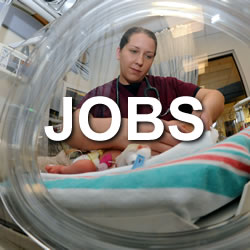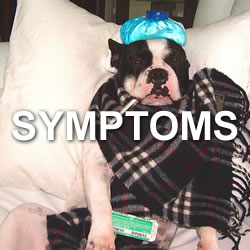Sunscreens
I will never choose between UV protection and beauty again - Hillary Fogelson

image by: USFWS - Pacific Region
HWN Recommends
Is Your Sunscreen Bad for the Planet? Here’s How to Choose an Ocean-Safe Formula
In the spring of 2005, Craig Downs, Ph.D., a forensic ecotoxicologist in Virginia, received an unusual phone call from the National Park Service. “They wanted to figure out what was happening to the bay around Trunk Bay in the U.S. Virgin Islands,” he says. Specifically, “they wanted to know what was killing all the coral reefs.” Curious, Downs, who is the executive director of Haereticus Environmental Laboratory, flew down with a team of researchers to investigate the nearshore habitat. They were stumped until a local Rastafarian overheard their conversation and made a passing comment. “He told us, ‘It’s the tourists,’” says Downs. “On a single day, about to 2,000 to 5,000 people visited…
Resources
 The Best Sunscreens... According to Dermatologists
The Best Sunscreens... According to Dermatologists
Choosing the best sunblock for you can be tough. That's why we consulted top derms for their personal picks.
 EWG's Guide to Sunscreens
EWG's Guide to Sunscreens
Do you depend on sunscreen for skin protection? Millions of Americans do, but they shouldn’t. Melanoma rates are increasing. The consensus among scientists is that sunscreens alone cannot reverse this trend. Yet a good sunscreen can play role in preventing sunburns that are a major risk factor for melanoma — provided you use it correctly.
 SafeMama Safer Sunscreen Cheat Sheet
SafeMama Safer Sunscreen Cheat Sheet
SafeMama™ Sunscreen Criteria: All sunscreens I approved needed to be free of Parabens, Phthalates, PEG’s (polyethylene glycols), Propylene Glycol, Phenoxyethanol, SLS/SLES, and a bevy of other chemicals I won’t bother listing but basically, they should contain a considerable amount of natural ingredients. The sunscreen ingredient I mainly recommend avoiding is the synthetic chemical oxybenzone.
 Your summer guide to sunscreen, from SPF to not-so-magic pills
Your summer guide to sunscreen, from SPF to not-so-magic pills
Choosing the right brand can be intimidating if you aren’t quite sure what you’re looking for.
 Haereticus
Haereticus
We’ve come up with a list of chemicals and attributes in personal care products (e.g., sunscreen lotions and sprays) that are found in a number of different aquatic and marine ecosystems that can have a detrimental effect on their existence. We call this list of chemicals and physical-attributes the “HEL LIST.”
 Looking for a Reef-Safe Sunscreen? Ask a Surfer
Looking for a Reef-Safe Sunscreen? Ask a Surfer
Popular ingredients in SPF products are harming the beaches we love—here’s what you can do to help.
 Making a cleaner, greener, environmentally safe sunscreen
Making a cleaner, greener, environmentally safe sunscreen
The bad news is that mounting evidence suggests that certain chemicals in these radiation filters are bleaching the corals and killing fish. The good news is that there is a greener, cleaner and safer alternative in the works. The sunscreens widely available belong to two major categories: physical and chemical
 Sunscreen: is it safe to make your own?
Sunscreen: is it safe to make your own?
These facts highlight the danger of using homemade sunscreen that lacks proper testing and protection. Also, the homemade recipes are not made in a sterile environment and so are prone to bacterial and fungal contamination, which can cause skin infections. The conclusion is simple: people are better off with shop-bought sunscreens.
What's Inside Sunscreen? The Same Stuff That's in Silly Putty
SUMMERTIME MEANS EMERGING from your dimly lit cubicle to expose your pallid skin to some precious rays of sunshine. But that presents you with a sticky dilemma: Slather yourself in UV-fighting goop or increase your chance of skin cancer (just five sunburns doubles your risk for melanoma).
A Guide to the Best Mineral Sunscreens
Summer's mission impossible is finding an effective, but safe sunscreen in the ocean of products. Here, some of the top options.
How SPF Ratings Can Do More Harm Than Good
Even amid the misconceptions and unreliability, possibly the biggest downside to SPF is that it only refers to UV-B rays. It does not address UV-A rays, which are also carcinogenic. To make sure that you’re protected from UV-A, you have to use a sunscreen that’s labeled “broad spectrum.” For UV-A, there is no SPF system, only this binary indicator of presence or absence.
The Best All-Natural Sunscreens
Covering your body with sunscreen every day—and about three times for days at the beach—is a good habit. But all that lotion soaking into your pores may also carry harmful ingredients. Oxybenzone, the most common UV-absorbing chemical, is approved by the Food and Drug Administration but some experts question its safety.
The Best Natural Sunscreens on Amazon, According to Hyperenthusiastic Reviewers
We’ve written before about the best sunscreens, the best moisturizers with SPF, and even heard from the Cut editors about their favorite sunscreens, but here we’re diving deep into the best natural sunscreens on Amazon.
The Best Sunscreens (and Toxic Ones to Avoid)
Now I’m not telling you never to wear sunscreen! Sometimes, you should wear sunscreen (more on that later). But first, I want to share with you the benefits of not wearing sunscreen for a portion of the day and also let you know what brands are toxic-free and safe for you and your family, and where you can get them.
 Is Your Sunscreen Bad for the Planet? Here’s How to Choose an Ocean-Safe Formula
Is Your Sunscreen Bad for the Planet? Here’s How to Choose an Ocean-Safe Formula
The active ingredients in chemical sunscreens tend to be the most problematic, says Downs, though preservatives, such as parabens, can also pose an environmental threat. Try to avoid oxybenzone (the most common compound found in some 3,500 sunscreens worldwide), octinoxate (which is even more toxic than oxybenzone, but usually found in lower concentrations), and octocrylene. See the Haereticus Environmental Laboratory’s comprehensive list for all potentially harmful ingredients.
5 Best Sunscreens for Summer
In total, the organization looked at 73 sunscreens — including lotion, spray, and stick formulas — and evaluated each on two main measures: First, the accuracy of the SPF claim, which measures how long you'd be protected against the UVB rays that cause burns, and second, the effectiveness of the UVA blockers, which shield you from the rays that can age you.

Introducing Stitches!
Your Path to Meaningful Connections in the World of Health and Medicine
Connect, Collaborate, and Engage!
Coming Soon - Stitches, the innovative chat app from the creators of HWN. Join meaningful conversations on health and medical topics. Share text, images, and videos seamlessly. Connect directly within HWN's topic pages and articles.
















